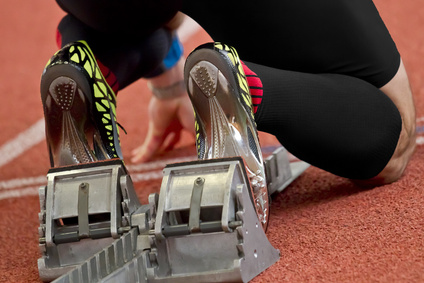
In this article I am going to share more information about compression garments, and share my views on the benefits they have or might not have when it comes to health and exercise.
They Do: Enhance Blood Flow
Much of the research found has a common factor that precedes all other findings. This is that the compression of the garments enhances blood flow through the muscles, which can lead to better oxygenation within the muscles1. Different amounts of compression can either aid or hinder the muscles.
Since some amount of compression has shown to assist in blood flow1, that does not mean to wrap your legs and arms up into a duct tape tourniquet. There hits a point where too much compression will impede blood flow. So, if you’re enhancing blood flow, what does this do for your physical performance and recovery?
They Don’t: Do Much for Endurance Performance
Surprisingly, these compression garments do very little on endurance performance. This seems pretty contradictory since enhanced blood flow will assist the body in transporting oxygen and lowering your blood lactate levels, which will cause less burning in the muscles. When cyclist was tested for 1 hour time trials there was no significant difference between the compression garments and non-compression garments2.
Not only with cyclists but with runners as well. It was shown that repeated sprints were not significantly improved with compression garments3. I personally found this hard to believe that with the physiological effects of compression there would be hardly any enhancements to endurance performance.
They Do: Can Help Quick Bouts of Activity
What was shown in both the cycling and running experiments is that the compression garments may actually improve the performance of an athlete during a maximal jump or anaerobic threshold cycle2,3. If you’re planning on doing one maximal effort activity, this may be of assistance. This improvement was also seen to be caused by the augmented blood flow within the body.
They Do: Help with Recovery
As far as recovery is concerned, a study was done by Kraemer, et al. showed the positive effects compression garments can have on recovery. After heavy resistance training, subjects wore compression garments for 24 hours. Their fatigue, soreness, and performance recovery levels scored much higher than the control group without the compression recovery4.
Within the Duffield study, perceived soreness 24 hours after physical activity was much lower (improved) with the compression recovery as opposed to without3. So there are positive effects on the use of compression garments. Using them as a recovery tool post-activity seems to be the best use.
Conclusion:
I am not discouraging the use of compression garments. This is merely to use the research that has been done to show what compression garments can do for you. Keep the above findings in mind when incorporating them into your routine. Wearing them to keep warm during a cold run outside fits perfectly well with the findings as your blood will flow better and raise your skin temperature. For those of you that tend to get sore quite easily, this may be the tactic for you.
References:
1) Perrey, Stéphane. “Compression Garments: Evidence for their Physiological Effects.” The Engineering of Sport 7.2 (2008): 319-28. Print 2) Scanlan, Aaron, Dascombe, Benjamin, Raeburn, Peter, Osborne, Mark. “The Effects of Wearing Lower-Body Compression Garments During Endurance Cycling.” International Journal of Sports Physiology and Performance. 3 (2008): 424-38. 3) Duffield, Rob, Portus, Marc; “Comparison of Three Types of Full-Body Compression Garments on Throwing and Repeat-Sprint Performance in Cricket Players.” The British Journal of Sports Medicine. 41 (2007): 409-14. 4) Kraemer, William, et al. “Effects of Whole Body Compression Garment on Markers of Recovery After a Heavy Resistance Workout in Men and Women.” The Journal of Strength and Conditioning Research. 24.3 (2010): 804-14. Photo Source: http://www.fotolia.com/Content/Comp/38962150



